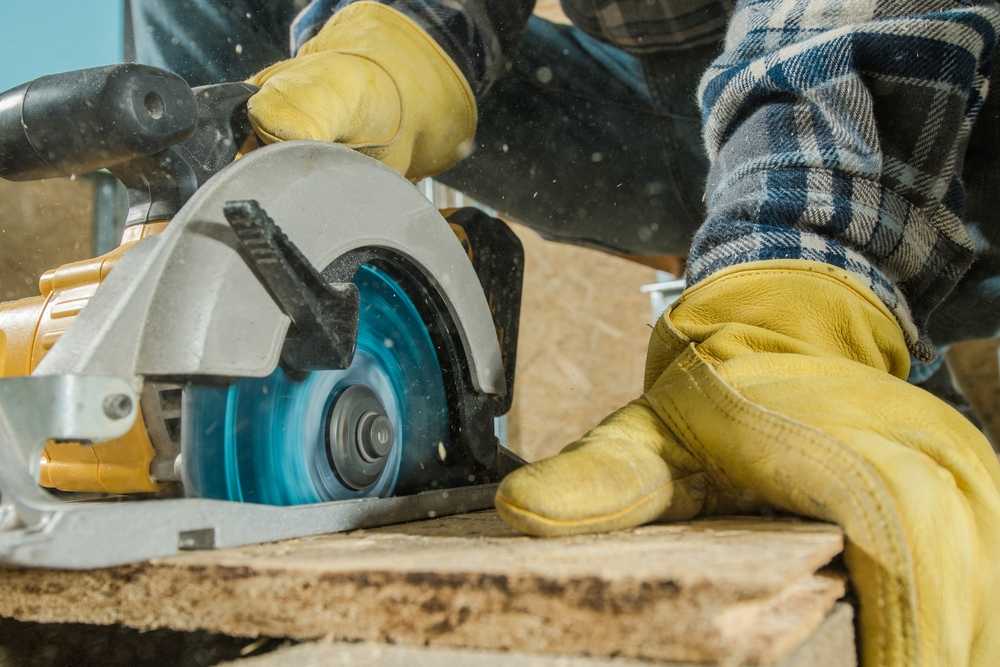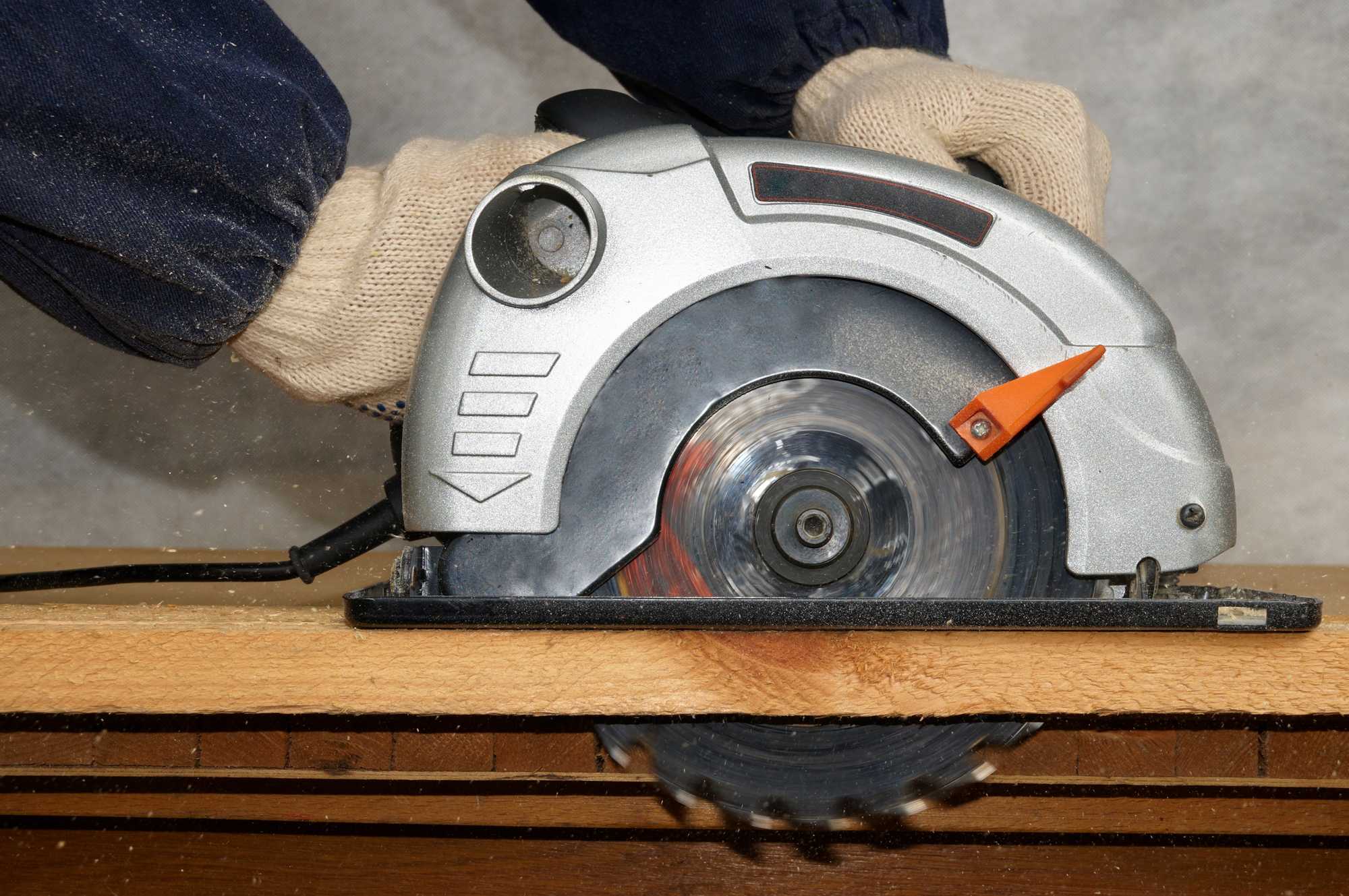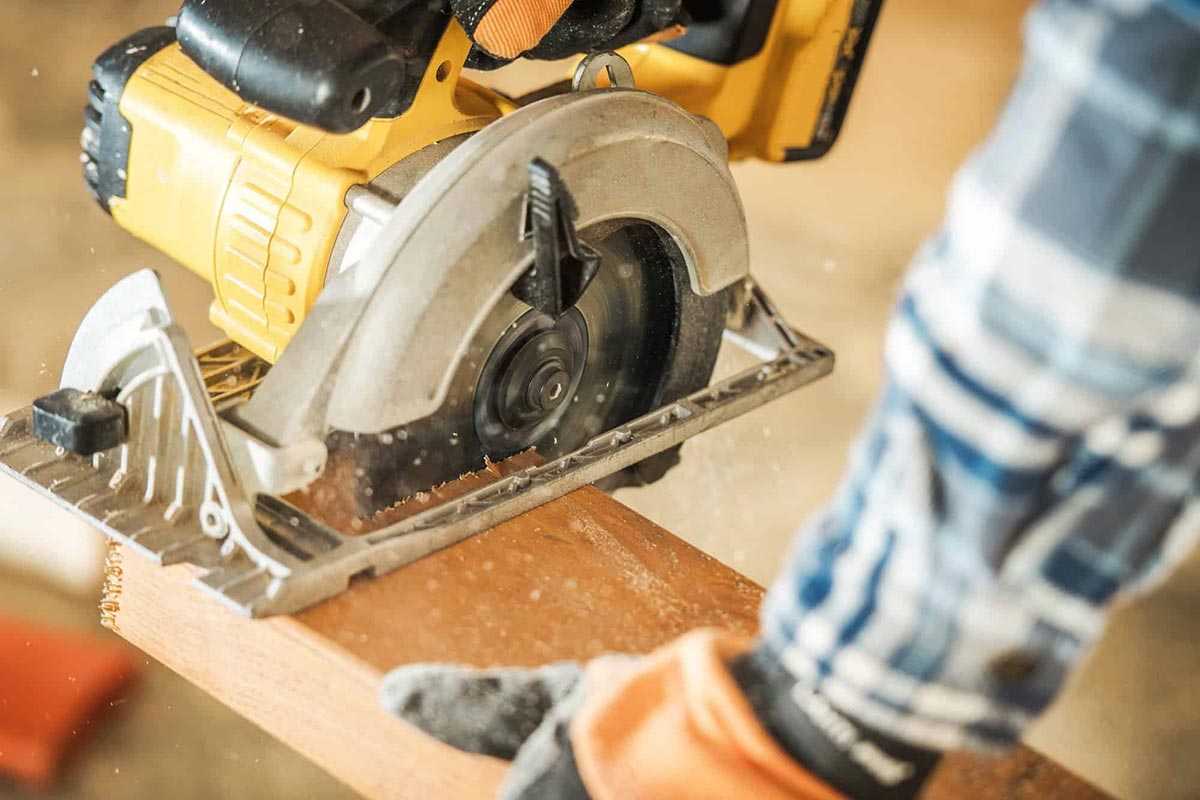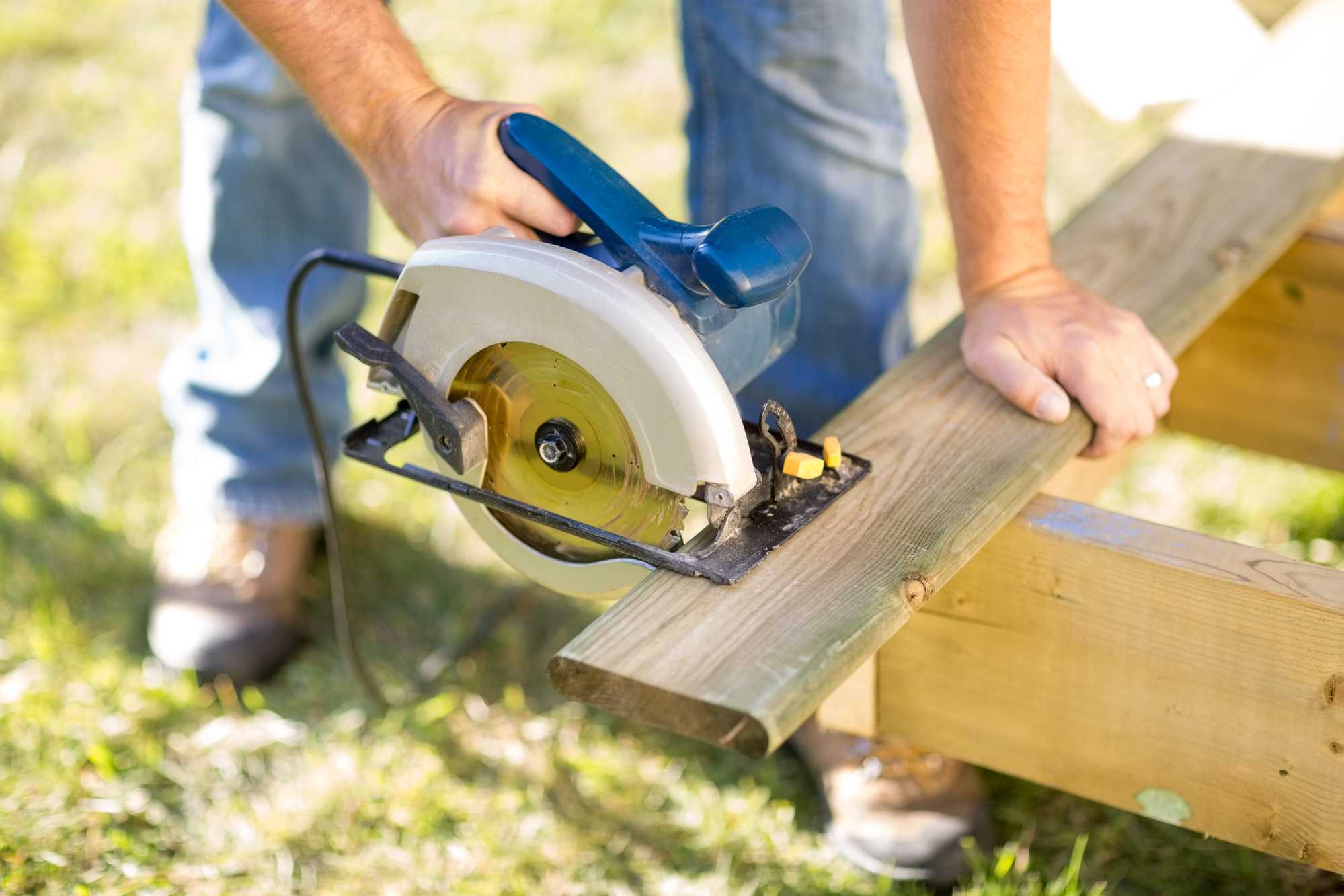The Best Cordless Circular Saws

In the market for a cordless circular saw? We've rounded up the best of the best for you! Read our no-nonsense reviews to find the right one for you.
Today’s cordless circular saws offer all the features of corded saws without the limitation of needing a power outlet nearby. This guide will lead you to the best options on the market right now. I’ve included a brief summary of the important features below. But if you want all the details, be sure to check out our complete guide to choosing a circular saw.
If you’re in a hurry and just want to know what to buy, I recommend the following:
- Best general-purpose cordless circular saw: The DeWalt DCS578 will power through any job a DIYer or home improvement buff is likely to come across. The 60 V FLEXVOLT batteries can power not just this saw but a wide range of 20 V and 60 V tools from DeWalt.
- Best worm-drive cordless circular saw: The Skilsaw SPTH77M-11 is the heaviest tool in the list. But if you need the high torque of a worm-drive saw for demanding jobs, you can’t beat this saw from the company that invented the portable circular saw.
- Best blade-left cordless circular saw: The Milwaukee 2730-20 is one of the few (and one of the best) blade-left cordless circular saws on the market. If you want the extra visibility that a blade-left design offers, this is a high-quality option.
- Best budget cordless circular saw: The Popoman MTW300B delivers a surprising bang for the buck. It does have some limitations, but it’ll handle most common DIY projects.
Features to Look For
I’ve tried to highlight the most important features here, but you can find more information in our complete guide to choosing a circular saw.
Related: Choosing a Circular Saw: A Complete Buyer's Guide
Batteries
It’s no surprise that the battery technology is one of the most important features to consider for cordless tools.
You’ll notice that different cordless circular saws use batteries with different voltages. In general you’ll need to pair the saw with a battery of the same voltage. A few batteries (such as DeWalt’s FLEXVOLT line) support multiple voltages for use with different tools.
The voltage is the main factor behind how much torque the saw can generate. This in turn dictates the thickness and hardness of material it can cut through. You should think about what projects you’re likely to use the saw on. While there are no hard-and-fast rules, use these guidelines:
12 volt cordless circular saws will generally have smaller blades (less than 6” in diameter). They’re more suitable for thinner material such as flooring, paneling, and hobby materials. I haven’t listed any in this round-up because I’m focusing on saws that can take on a wider range of projects.
18-24 volt saws come in a range of blade sizes, including the most common, 7 1/4” diameter. They’ll suffice for most home improvement or DIY jobs such as cutting plywood or lumber like 2x4s.
60 volt saws sit at the top end and target professionals. They’re on par with traditional corded circular saws in terms of power. This lets them tackle more demanding tasks, including thicker lumber and hardwoods.
The higher the voltage, the heavier the batteries tend to be. The difference isn’t huge (say, 1 1/2 pounds versus 1/2 pound), but you will notice it if you’re using the tool all day. If you’re smaller or on the, shall we say, less-buff side, this might be a consideration.
If you have other cordless tools, you’ve already invested in a set of batteries and chargers. Consider looking for a cordless circular saw that uses the same system. You can buy the bare tool itself for a lot less than a kit that includes a battery and charger. But you might find that the features or power of the saw you want are worth owning more than one system.
Blade Diameter
The most versatile blade size for cordless circular saws is 7 1/4”. This will let you handle any typical material you’ll use in home improvement or DIY projects. It also gives you a large number options when it comes to buying saw blades for specific jobs. You can learn more at our complete guide to circular saw blades.
Cordless circular saws also come in smaller blade sizes, including a couple in the list below. The smaller blade limits the thickness of material, but these saws may be smaller and lighter. This makes them more comfortable to use for extended periods of time, and they’re often cheaper as well.
If you’ll only be sawing thinner material (up to the thickness of a 2x4), you can consider the smaller blades. But if you have heavier demands of your cordless circular saw, you’ll want to stick to a 7 1/4” blade.
Blade Side
Most cordless circular saws have the blade mounted on the right as you hold the saw in front of you. This is known as a “blade-right” design. While this design works just fine, it does have one drawback. Since most people push the saw with their right hand, it puts the blade on the opposite side of the saw from you when you’re using it. This can make it tricky to see the blade to ensure you are cutting straight along your intended line. One solution is to push the saw with your left hand, but many people find that awkward.
Another solution is to buy a saw with the blade mounted on the left (a “blade-left” design). That way, you can easily check to make sure you’re on course as you saw.
Blade-left cordless circular saws are beginning to appear on the market, but they’re still in the minority. If you haven’t used one before, it might be worth trying to borrow one to see if it’s a feature you care about.
The Best Cordless Circular Saws
I think the saws below represent the best options on the market today. But “best” is different depending on your needs and budget. I’ll try to help you understand which one of them is truly the best for you.
DeWalt DCS578 7 1/4" 60V MAX Circular Saw
As one of the only 60-volt cordless circular saws on the market, this saw packs more punch than most others. The additional voltage provides torque comparable to a regular corded saw. Many purchasers say they can’t tell the difference between this saw and a corded one.
The DCS578 is the successor to the DeWalt DCS575, which is the saw I personally use in my home shop on a regular basis. So far there isn’t anything I’ve thrown at the DCS575 that it hasn’t handled smoothly and precisely. And the DCS578 is even more capable, generating 47% more power from the same batteries. It weighs up to 11.5 pounds with a 9.0 Ah battery, more than many other saws. So if you have a smaller build, you might prefer to look at one of the lighter saws in this list.
With the blade vertical, you can make cuts up to 2 9/16” deep. Beveled to 45°, you still get a respectable 2” of cut depth. The saw can bevel all the way to 57° and has positive stops at 22.5° and 45°.
An LED light on the front of the saw and a small sawdust-clearing blower both make it easy to follow your cut line. If you don’t already have a DeWalt 60V battery and charger, the saw is also packaged as a kit that includes one of each.
Positives
- Power and torque comparable to a corded saw
- Brake responds quickly to stop saw almost immediately
- Deeper cuts than most other 7 1/4” cordless circular saws
- Handle design is very comfortable to use and makes it easy to push straight
Negatives
- Heavier than many other saws in its class
- Shoe friction requires a little more energy to push
Skilsaw SPTH77M-11 7 1/4" 48 V Circular Saw
Skilsaw invented the portable circular saw back in 1924 and they’ve been making them ever since. This is their latest addition to the lineup, and it is a beast of a professional-quality tool. It’s one of the only worm-drive cordless circular saws on the market.
Many pros prefer worm-drive gearing over the traditional “sidewinder” gearing. That’s because of the extra torque it provides, transferring more power to the saw blade. This saw makes easy work of thicker raw lumber, laminate beams, and so forth. The saw can cut up to 2 3/8” with the blade vertical and 1 15/16” at a 45° bevel. It can bevel up to 53° in all.
The 48 V battery powers the saw at up to 5800 RPM. Skilsaw claims the battery can last all day and make over 400 cuts on one charge. That may be a little optimistic, as several purchasers say that half a day is more realistic on one charge. The battery takes about an hour to charge, so you’ll want a spare or make sure you leave adequate time for charging.
The saw itself glides smoothly on its low-friction magnesium shoe. It does an effective job of clearing dust towards the side opposite the blade, making it easy to follow a line. The blade-left design makes it simpler for right-handed users to keep an eye on the blade or notches as they cut.
All this capability comes at a cost. This saw and its batteries are more expensive than most of the competition. And it is H-E-A-V-Y, weighing in at just over 11 pounds for the tool alone. When you add the 4 lb battery, the 15 lb total weight means you need some muscle to be slinging it around all day.
The weight and expense are the main reason this isn’t my overall top pick. Honestly, this tool is overkill for the average DIYer. But if you make serious demands on your cordless circular saw and want the best of the best, look no further.
Positives
- High torque for difficult cutting jobs
- Smooth-gliding shoe makes pushing easy
- Blade-left design increases visibility of blade while cutting
- Effective dust clearing
Negatives
- Very heavy compared to the competition
- Battery takes a full hour for maximum charge
Milwaukee 2730-20 6 1/2" 18 V Circular Saw
This is one of the few blade-left “sidewinder” tools from the big manufacturers. Since most people are right-handed, this design places the blade where it’s easy to see. That, in turn, makes it easier for you to follow your markings and make a straight cut.

I opted to feature this saw over its slightly larger cousin, the Milwaukee 2732-20. That’s mainly because the blade-left design will appeal to anyone who’s gotten used to blade-left corded saws. Be aware that there isn’t quite as big a selection of 6 1/2” blades. Nevertheless, most well-known blade manufacturers offer a range of blades in this size.
Purchasers note the long battery life on this saw, with some saying they can use it all day without recharging. It’s got a generous 2 3/16” cut depth with the blade vertical, and 1 5/8” at 45°. That’s just enough to cut standard 2x4s when beveled. The brushless motor powers the blade up to 5,000 RPM, and is plenty beefy to tackle any common project.
If you don’t already own Milwaukee 18 V batteries and chargers, you can get a kit with 2 batteries.
Positives
- Blade-left design makes it easy to follow cut lines
- Battery lasts up to a full day
- Bevel angles marked in 1° increments
- Comfortable handle grips
Negatives
- Hex adjustment key falls out of its on-board storage
- 6 1/2” blades can be harder to find than 7 1/4”
- Blade guard can catch on some cuts
Makita XSH06Z 7 1/4" 18 V Circular Saw
This saw from Makita is a bit different from the others. It uses 18 V batteries, but it requires two of them, for a total of 36 V of power. That gives its brushless motor plenty of power to smoothly cut through thick timbers.

The saw generates 6000 RPM with no load, more than almost almost any other circular saw. Many customers comment on the smoothness of the cut, something Makita is known for. The saw itself weighs in at just over 10 pounds, so be aware that this is not a lightweight tool when you add the two batteries.
If you don’t already have a charger, you’ll want to get this kit with 2 batteries and charger. Makita claims you can make up over 600 crosscuts in a 2x4 on a single battery charge. The charger can fully charge both batteries in just 45 minutes.
Overall, this is a great cordless circular saw from one of the world’s leading manufacturers of power tools.
Positives
- More power than most single-battery saws for use on thick material
- Smooth cutting through even the thickest material
- Comes with a high-quality stock blade
Negatives
- Heavier than many competitors
- Need to keep two batteries charged
Metabo HPT C18DBALQ4 6 1/2" 18 V Circular Saw
Metabo HPT, formerly Hitachi Power Tools, offers several cordless circular saws. The C18DBALQ4 (okay, they don’t have the catchiest model numbers) is what I would consider a mid-range saw. It doesn’t have the raw power of a top-of-the-line model, but it will handle any typical DIY job.
The saw is a reasonably light 6.8 pounds, so you won’t get exhausted lifting it all day. Although it’s only a 6 1/2” saw, its clever design gives it quite a deep cut. At 2 19/32” with the blade vertical, that rivals all but a few 7 1/4” saws. The saw can bevel from -5° to 45°.
This saw would be a great choice if you know you’ll mostly be working with typical 2x lumber and sheet goods.
Positives
- Comes with a rip guide
Negatives
- Depth guide in metric rather than imperial units requires conversion for US users
Kobalt KCS 6524B-03 6 1/2" 24 V Circular Saw
Kobalt is not one of the usual big names in cordless saws, primarily because it’s the house brand at Lowe’s. The big chain house brands often get a bad rap for not measuring up in quality to the name brands. But this Kobalt cordless circular saw is a pleasant surprise. It would be a great choice for someone who needs a circular saw for occasional DIY projects.
Its 24-volt battery provides enough power to tackle most common DIY tasks like cutting plywood and 2x4s. You likely won’t want to use it on anything more demanding than that, though.
The brushless motor design makes for a compact, maneuverable, and lightweight (6 3/4 lb) saw. And the design places the arbor close to the base of the saw, so more of the saw protrudes below the shoe. This gives a cut depth of 2 7/16” with the blade vertical, more than any other 6 1/2” circular saw and comparable to many 7 1/4” saws. When beveled to 45°, the cut depth drops to 1 15/16”. The saw can be beveled up to 50°.
You can find the Kobalt 24 V batteries for a fraction of the price of the big name batteries. So if you aren’t already invested in another line of cordless tools this could be a cost-effective option. If you don’t already have them, you’ll need to buy the batteries and charger separately. This two-battery kit would be a good choice, so you can use one while the other charges.
Positives
- More power than 18 V or 20 V cordless saws
- Lightweight due to brushless motor design
- Deeper cut than most other 6 1/2” circular saws
- Cheaper batteries than major brands
Negatives
- No blower to clear sawdust, so it accumulates in front of the saw
- Blade guard is less sturdy than the competition’s
- No battery included, must be purchased separately
- 6 1/2” blades can be harder to find than 7 1/4”
Popoman MTW300B 6 1/2" 20 V Circular Saw
If you are on a tight budget but need the portability of a cordless circular saw, this tool from relatively-unknown Popoman gets good marks from many customers. It’s not without its drawbacks, though, so read on to see if it makes sense for you.
With the blade vertical, the depth cut of 2 1/16” will suffice to cut through plywood or 2x4s. At its maximum 45° bevel, the depth drops to 1 3/8”, which won’t make it through those 2x4s.
The saw comes with two blades, which is nice, but when those wear out your options will be limited. That’s because this saw’s arbor (on which the blades mount) is not a standard size. It’s 20mm (slightly more than 3/4”) rather than the 5/8” that is typical in the US. Some customers have found (or made) adapters to fit, but this might be more hassle than you want.
A laser guide helps you saw straight, and the brake stops the saw when it encounters too much resistance. The brake borders on over-sensitive and may occasionally trigger during routine cutting. At just 6 pounds, the saw is lightweight enough for anyone to use without trouble.
The build quality is not up to the standards of the name brands, so don’t expect this saw to stand up to heavy abuse. Some users reported electrical issues with the saw shortly after purchasing, but the company seems to have responsive customer support.
I’ll be honest with you–if your budget is really tight, you might be better off getting a solid mid-range corded model and a long extension cord. But if you absolutely need a cordless circular saw for lighter-duty work, this tool gets the job done. Of all the low-price cordless circular saws available, this is only one I feel comfortable recommending. And it includes two blades, a battery, and charger, all for the price of a single battery from the big names. Just be aware of its capabilities and limitations, and you won’t be disappointed.
Positives
- Much cheaper than big-name brands
- Lightweight for easy maneuverability
- Includes two blades, battery, and charger
- Laser guide for straight cutting
Negatives
- Non-standard arbor size limits replacement blade options
- Lower-quality construction than name-brand competitors
- Overall positive customer reviews tempered by some reports of electrical failure
- 6 1/2” blades can be harder to find than 7 1/4”
Conclusion
Any of the saws listed above will make the majority of cuts the average DIYer or home improvement buff needs. I hope I’ve helped you find the one that meets your needs the best. If you’re still not sure, head over to my complete guide to choosing a circular saw for a more in-depth look at all the features you might care about.









